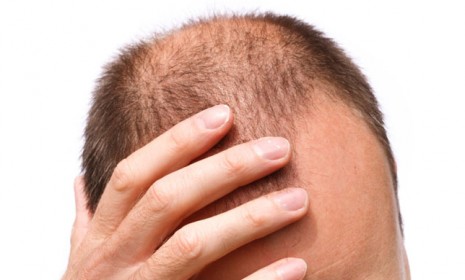Finally, a cure for baldness?
Thanks to innovative geneticists, some lab mice, and baby foreskin, researchers have found a way to grow new human hair


There are many treatments for baldness, but no cure. That's not for lack of trying. Currently, balding men can get hair transplanted from the back of their scalp to their chrome-domed pate, and various drugs claim to stop the upward march of hairlines or even stimulate new hair growth — but come on: If Rogaine (minoxidil) really cured baldness, maker Upjohn would be worth more than Apple.
The holy grail of baldness research is finding a way to grow new hair. Whoever accomplishes this feat will be hailed as a hero by millions of men and a smaller number of balding women, and will very likely retire with great wealth.
Hair geneticist Angela Christiano at Columbia University Medical Center may have hit upon that cure, but she says her motive is more philanthropic — and more personal. Christiano has a genetic condition called alopecia areata that results in occasional bald patches at the back of her head of otherwise luxuriant hair. Watch her explain her new procedure, developed with Colin Jahoda at Britain's Durham University, in this video from Columbia:
The Week
Escape your echo chamber. Get the facts behind the news, plus analysis from multiple perspectives.

Sign up for The Week's Free Newsletters
From our morning news briefing to a weekly Good News Newsletter, get the best of The Week delivered directly to your inbox.
From our morning news briefing to a weekly Good News Newsletter, get the best of The Week delivered directly to your inbox.

The breakthrough involves human dermal papilla cells — which foster hair growth from the base of follicles — a handful of human hair donors, lab mice, and foreskin from circumcised babies. Basically, the researchers harvested papilla cells from the donors, cloned them, injected them into skin they grafted onto the back of the lab mice, and watched for new follicles to sprout up. They did, in five of the seven grafts. Tests showed that the new hair was from the human donors, not the mice.
Why use foreskin? It's "normally 100 percent hairless," explains Denise Grady in The New York Times. So Christiano and Jahoda reasoned that "a technique that can grow hair on a foreskin has a pretty good chance of growing it on a person's head."
That's solid logic. But this isn't the first stab at harvesting papillae to grow new human hair — in fact, researches have known for more than 40 years that you can harvest rodent papilla cells, expand their numbers in a petri dish, and transplant them back to get newly grown rodent hair. That technique has never worked with human papillae: When cultured in a petri dish, the human cells lost their ability to form new hair follicles.
The eureka moment came when Jahoda realized that the spontaneous clumping of rodent papilla cells might be the key, and that the human version — which doesn't cluster — might have to be cultured in a different way. So the team grew the human cells in drops suspended upside-down off the lid of a lab dish. Gravity drew the papilla cells to the bottom of the drop and, clumped together like that, the cells developed in a way that made them able to reprogram the skin grafts to grow new hair.
A free daily email with the biggest news stories of the day – and the best features from TheWeek.com
Christiano and Jahoda published their findings Monday in the journal Proceedings of the National Academy of Sciences.
There are plenty of kinks to work out before this is tested on humans, and it will be a few years before clinical trials tell us if this is, in fact, a viable cure for baldness. If it is, says Christiano, the biggest beneficiary may not be the hordes of aging men with male-pattern baldness. "This could greatly expand the utility of hair restoration surgery to women and to younger patients." You can bet the run-of-the-mill bald men will be lined up, too.
Peter has worked as a news and culture writer and editor at The Week since the site's launch in 2008. He covers politics, world affairs, religion and cultural currents. His journalism career began as a copy editor at a financial newswire and has included editorial positions at The New York Times Magazine, Facts on File, and Oregon State University.



